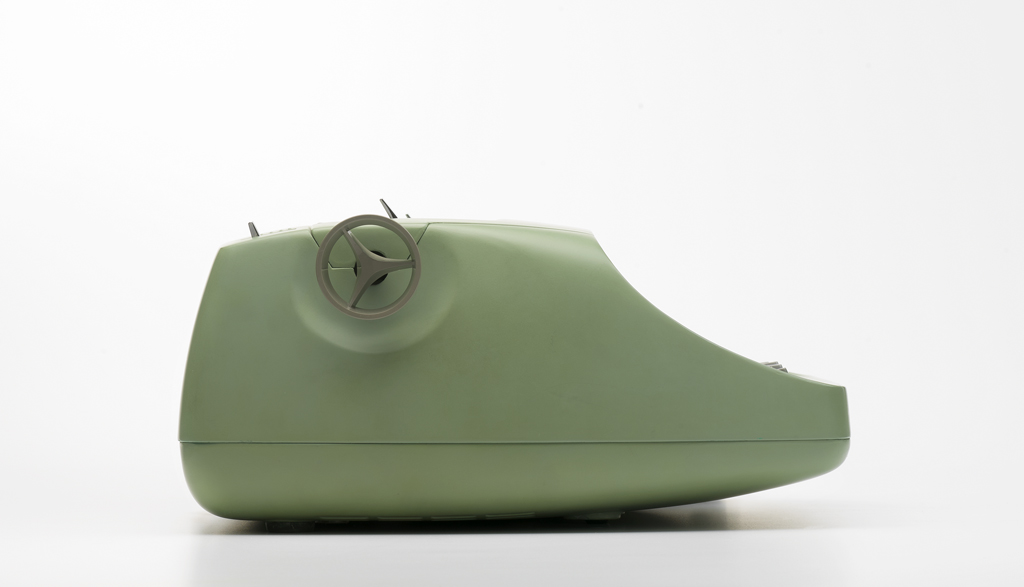Selectric 715 typewriter
Manufacturer
International Business Machines (IBM)Designer
Eliot NoyesCountry
USAYear
1961Dimensions
W: 535mm H: 190mm D: 395mmRelationships
The Three Phases Of AdoptionNew developments in office equipment through the second half of the 20th century brought about dramatic changes in office culture and the organisation of office labour. The Selectric typewriter went into production in 1961 following a 14-year development program at IBM that saw industrial design move from the office of Norman Bel Geddes to Eliot Noyes (1910 – 77), an American architect and industrial designer.
The Selectric typewriter and the Executary dictation machine were part of the vision of the IBM office products division (formerly its typewriter division) to develop ‘start to end’ technologies for the creation, distribution and printing of documents (word processing). IBM envisaged an office environment where word processing would be centralised and removed from other office activities.
The Selectric typewriter introduced the innovative ‘golf ball’ mechanism replacing type bars with a moving spherical printing element and eliminating the need for a moving carriage. The type mechanism is particularly sensitive to touch and responds with a weight and action that is apparently very satisfying.
In its heyday in the mid 1970s IBM Selectric typewriters accounted for around 75% of the US electric typewriter market. IBM’s influence in this area began to decline following challenges from other manufacturers and new approaches to word processing. Xerox, Olivetti and later Apple all made inroads into the field.

Executary dictation machine
Made by IBM
USA, 1963–1968
W: 155mm H: 45mm D: 120mm

Magnetic belt packaging
Made by IBM
USA, 1963–1968
W: 210mm H: 16mm D: 120mm
IBM completely overhauled its products, packaging, stationary, advertising and corporate branding through the late 1950s to the early 1960s under the guidance of Noyes, regarded as a pioneer of integrating design and business strategy. The magnetic tape box displays IBM’s visual identity from the 1960s. Designers involved in the project included Noyes alongside Marcel Breuer, Paul Rand and Charles Eames.


